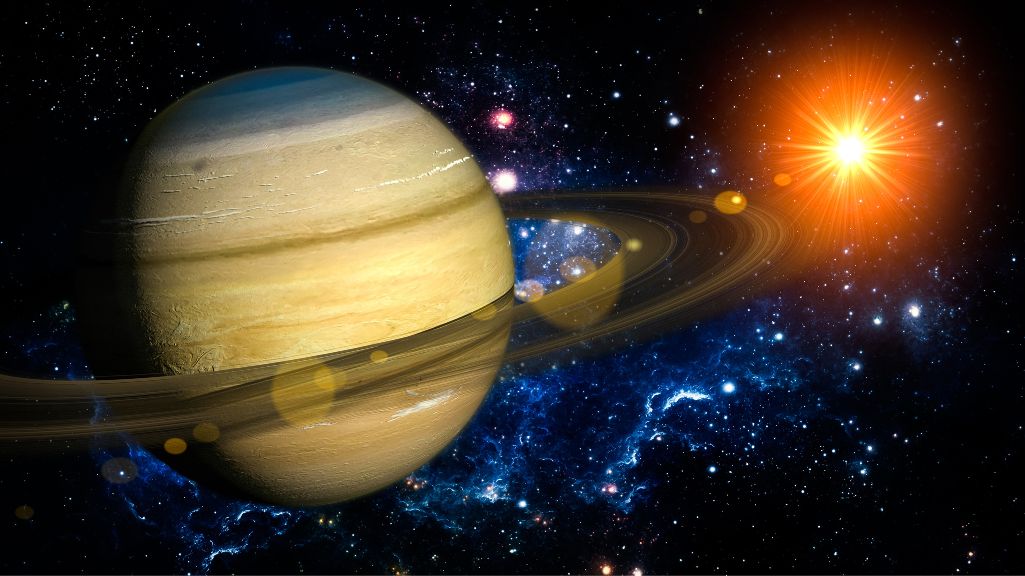What is the Most Exciting Fact About the Solar System?
Adina Anderson
. 2 min read
The history of astronomy has mostly been a one-way journey from a worldview in which our solar system is orderly (and divine) to a view in which we are not special. The partnership between astronomers and developers has brought us closer to understanding the vastness and complexity of the universe, reminding us that the pursuit of knowledge knows no bounds. Johannes Kepler, who demonstrated the non-circular orbits of the planets, tried to restore a sense of heavenliness by latching onto a new pattern for their orbits based on Plato’s mathematical solids but that notion was discredited many years later with the discovery of Uranus.

Exploring Fascinating Phenomena from Uranus' Sideways Spin to Jupiter's Volcanic Moon
1. The solar system is really big
Our solar system is huge. There is a lot of empty space out there between the planets. Voyager 1, the most distant human-made object, has been in space for more than 40 years and it still has not escaped the influence of our Sun. As of Feb. 1, 2020, Voyager 1 is about 13.8 billion miles (22.2 billion kilometers) from the Sun nearly four times the average distance from the Sun to icy Pluto. Scientists figured out a while ago that writing out those huge numbers wasn't the best use of their time, so they invented the Astronomical Unit (AU).
2. Uranus Spins Sideways
One of the most bizarre phenomena in our solar system is the strange way that Uranus spins on its side. That’s a puzzle because all the other planets spin upright. The conventional thinking holds that soon after the solar system formed, Uranus was knocked on its side by a series of collisions with some of the numerous planetesimals that swept through the region at that time. The problem with this theory is that Neptune survived the same conditions unscathed. This suggests some other process was responsible for Uranus’ bizarre behavior.
3. Lo Jupiter's fifth moon
Lo Jupiter's fifth moon is the most volcanically active body in the solar system. Io's surface is peppered with hundreds of volcanoes, some spewing sulfurous plumes hundreds of miles high. The volcanic moon is Jupiter's third-largest and the innermost Galilean satellite, it finds itself caught in a gravitational tug-of-war between Jupiter and two nearby Jovian moons Europa and Ganymede.
4. Olympus Mons is a giant volcano on Mars
Mars' Olympus Mons is the largest volcano in the solar system. The massive Martian mountain towers high above the surrounding plains of the red planet, and may be biding its time until the next eruption. Found in the Tharsis Montes region near the Martian equator, Olympus Mons is one of a dozen large volcanoes, many of which are ten to a hundred times taller than their terrestrial counterparts. Olympus Mons rises three times higher than Earth's highest mountain, Mount Everest, , whose peak is 5.5 miles (8.8 km) above sea level.
5. Jupiter has the biggest ocean of any planet, albeit made of metallic hydrogen
Orbiting in cold space five times farther from the sun than Earth, Jupiter retained much higher levels of hydrogen and helium when it formed than did our planet. In fact, Jupiter is mostly hydrogen and helium. Given the planet’s mass and chemical composition, physics demands that way down under the cold cloud tops, pressures rise to the point that the hydrogen must turn to liquid. In fact there should be a deep planetary ocean of liquid hydrogen.
Conclusion
In conclusion, the history of astronomy has shown a shift from a worldview that saw our solar system as divine and orderly to one in which we recognize our lack of specialness. This shift was exemplified by Johannes Kepler's realization that the planets do not orbit in perfect circles and his subsequent attempt to find order in Plato's mathematical solids. However, this notion was later discredited with the discovery of Uranus, which spins on its side due to an unknown process. Other fascinating phenomena in our solar system include Jupiter's fifth moon, Io, which is the most volcanically active body in the solar system, and Mars' Olympus Mons, the largest volcano in the solar system.
More Stories from
The Law of Conservation of Mass: A Fundamental Principle in Science
The article highlights the significance of the law, provides experimental evidence, and discusses its applications in various scientific disciplines, including chemistry, physics, environmental science, engineering, and astrophysics.
The Layers of the Sun: How Nuclear Fusion Creates Solar Energy and Sustains Life?
This article explains how the sun's energy is created through nuclear fusion reactions in its core.
Understanding AC and DC: The Fundamentals of Electric Power
This article provides a concise overview of Alternating Current (AC) and Direct Current (DC), the two fundamental types of electrical power.
The Mysteries of the Brain: Recent Discoveries in Neuroscience
From the brain's remarkable adaptability to the profound link between the gut and brain, explore the cutting-edge findings shaping our understanding of cognition and behavior.
Defense Advanced Research Projects Agency (DARPA): Pioneering Innovation in Defense Technology
This article provides a concise overview of the Defense Advanced Research Projects Agency (DARPA), its mission, and its key contributions to revolutionizing defense technology.






.png?width=40&aspect_ratio=1:1)

.png?width=40&aspect_ratio=1:1)




